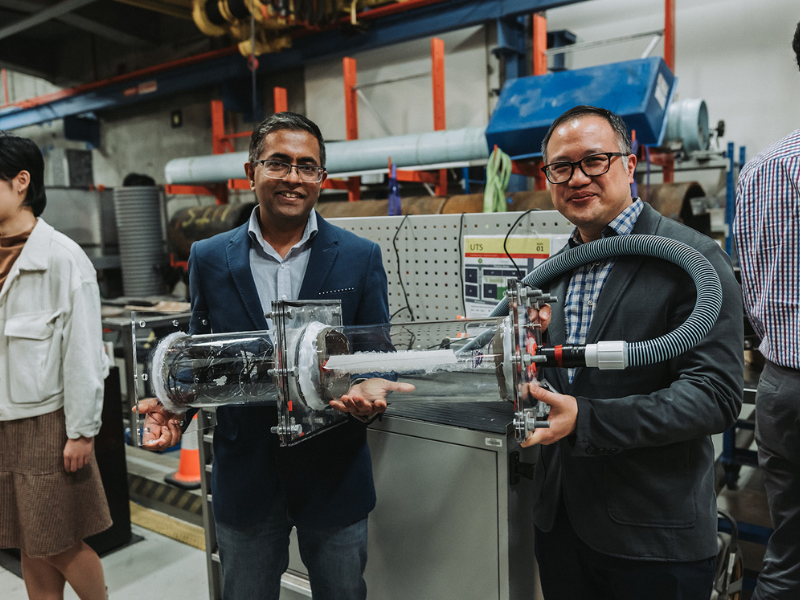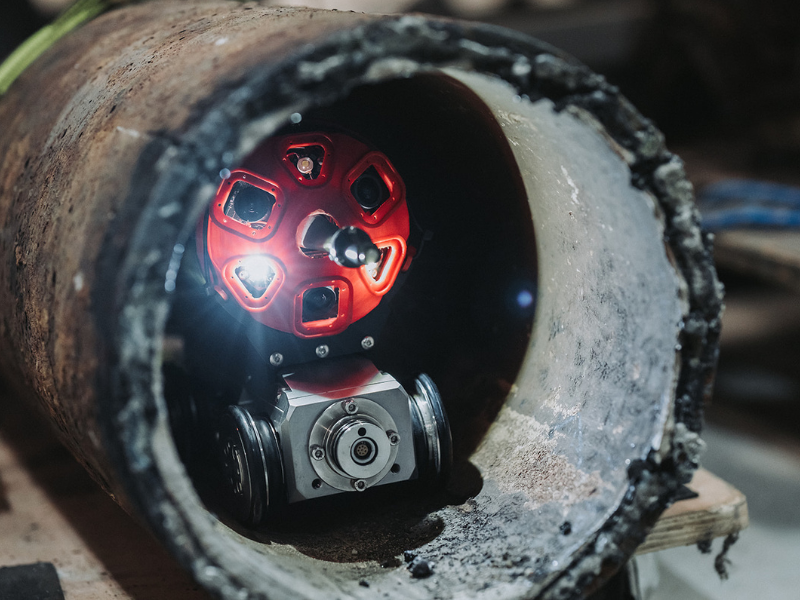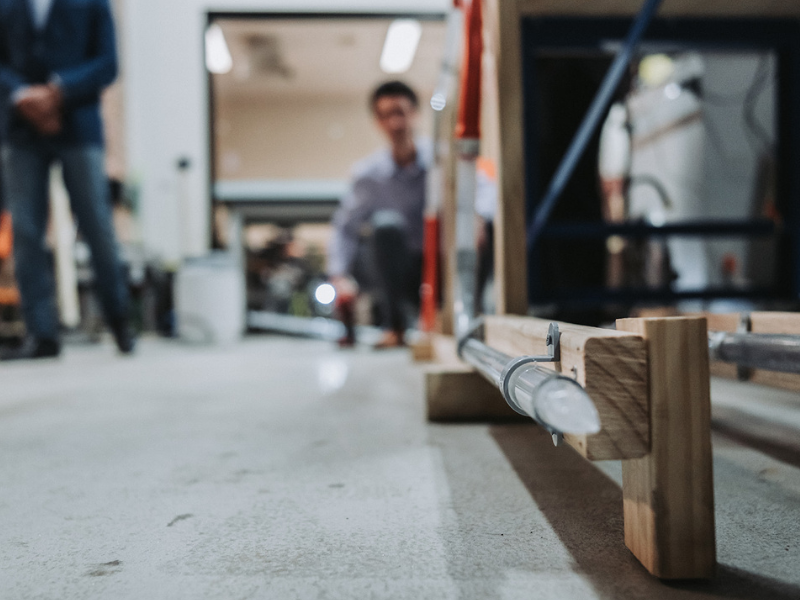
Vine-bots make a future friend for nbn field techs
3-minute read
We’re working with Australia’s leading scientists and universities to unleash the power of the internet, inventing new technologies, and helping enable others to do so as well.
Investigation into the unseen world of a usually inaccessible part of an nbn® fibre duct has taken a step forward in the latest phase of nbn’s partnership with the University of Technology Sydney (UTS).
Working with the UTS Robotics Institute, nbn has been exploring the potential of using remote-controlled robots to assist nbn field technicians. These robots may assist in tasks like investigating and clearing blockages in the pipes used to carry the nbn optic fibre cables that are connecting more homes and small businesses to new fibre connections across Australia.

Professor Sarath Kodagoda (UTS) and Andrew Leong (nbn) with the TubeScout robot.
Andrew Leong, nbn Executive General Manager of Technology and Solutions, explains:
“We’re looking to see if these robots could enable our field technicians to access hard-to-reach spaces and help locate and bypass blockages in existing nbn conduits. Not only can this help us avoid potentially disrupting civil works required to run new fibre connections, but these systems could also help us scope repair works.
The next phase of the program will be delivered under the recently inked ASTRID collaboration, as these partnerships are critical to helping us develop the next generation of technologies that will help to keep our network scalable, reliable and secure.”

The 2022 proof-of-concept phase involved 4 wheeled robots moving through a standard 250mm pipe. Credit: Oscar Colman.
After the successful proof-of-concept trial in 2022, using four-wheeled robots crawling through a standard water pipe, the focus has shifted to a more “real-world” nbn scenario. Picture working within a space just a tenth of the size the UTS team was accustomed to – typically 20mm diameter containing cables – that’s closer to the size of an nbn pipe.
Director of the UTS Robotics Institute, Sarath Kodagoda, continues:
“Up until now, we have only ever worked with pipes around 150-250 mm in diameter. For the nbn project, we’ve had to reduce our working scale down to about 20 mm.”
“Once you consider the cabling also takes up about half of the interior, which was another new consideration for us, the real challenge is how to work with what free space is available.”
Challenges like these encourage innovation and fresh thinking, leading the UTS team to explore a new type of robot they’d never used before.

The tip of TubeScout as it navigates its way out of a typical nbn-sized pipe. Credit: Oscar Colman.
Navigating the unseen with ‘soft robots’
The robots used – known as soft robots – are designed to mimic the movement of biological organisms, such as vines or worms, that cover distance by ‘growing’ in one direction.
These vine-bots are made of a soft, flexible material that allows them to bend and deform, making them ideal for moving through tight spaces, unfurling like an inside-out sock as pressurised air is pumped through at low pressure.
What's truly remarkable though, is the adaptability of the soft robot – nicknamed TubeScout by the team – to be squished and reshaped to slip through spaces as tiny as 2mm.
This ability to flex and deform allows TubeScout to navigate through tight spots without harming existing cables or getting stuck in the muck and debris that can clog up the pipes.
Adapting to challenges
As nbn and UTS continue to collaborate and innovate, the future looks brighter than ever.
With the next phase of the program involving field trials, TubeScout is getting ready to investigate blockages in the real world, potentially with a small camera to help the operators see what and where the blockages are.
This partnership showcases the potential of teamwork between humans and robots.
It's a step toward making network maintenance and construction more efficient and effective, and it's a glimpse into the incredible possibilities that lie ahead.
“The world is seeing unprecedented technological change coming faster than ever. For nbn to provide the best network to meet Australians digital needs into the future, it is critical that we leverage hyper-scale innovation through partnerships with world-leading research institutions such as UTS,” says Andrew.
